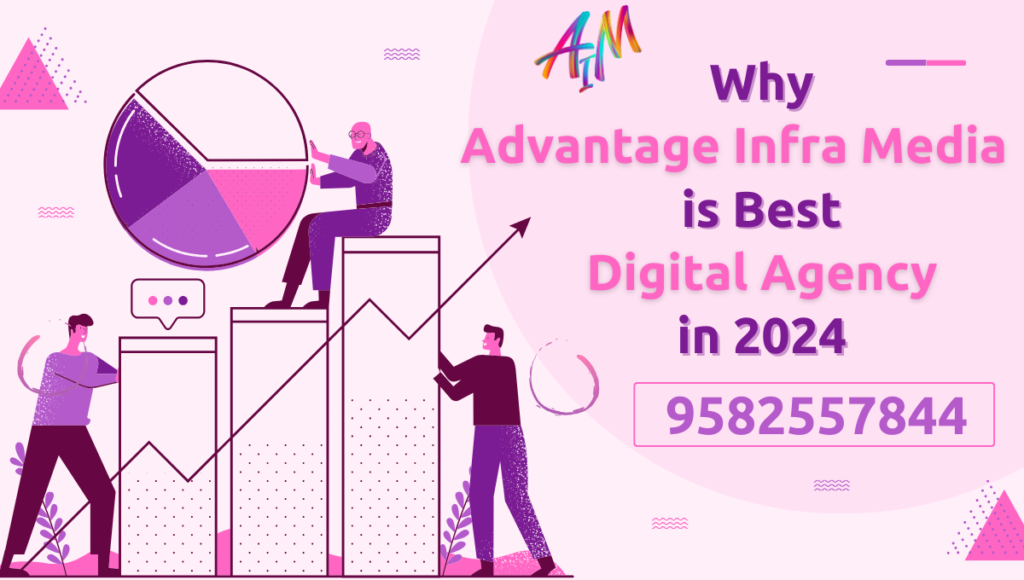What is Placement in Facebook Ads?
Introduction
Facebook Ads have become a cornerstone of digital marketing, offering businesses a powerful platform to reach a vast and diverse audience. One of the critical aspects of creating successful Facebook ad campaigns is understanding and utilizing the concept of “placement.” Placements in Facebook ads determine where your ads will appear across Facebook’s extensive network, including Facebook itself, Instagram, Messenger, and the Audience Network. This blog will delve into the intricacies of ad placements, their types, how to select the best ones, and strategies to optimize their performance.
Understanding Facebook Ad Placements
Definition and Importance
Placements refer to the various locations where your Facebook ads can be displayed. These locations span different platforms and areas within those platforms. Choosing the right placements is crucial because it affects your ad’s visibility, audience reach, and overall campaign effectiveness. Proper placement selection can enhance engagement, improve click-through rates (CTR), and increase conversions.
Automatic vs. Manual Placements
Facebook offers two primary options for selecting ad placements:
- Automatic Placements: Facebook’s algorithm automatically selects the best placements for your ads based on your campaign objective. This option simplifies the process and can be beneficial for those who are new to Facebook advertising or prefer a hands-off approach.
- Manual Placements: This option allows advertisers to choose specific placements for their ads. It provides greater control and can be advantageous for campaigns targeting specific audiences or aiming to achieve particular objectives.
Types of Facebook Ad Placements
Facebook ad are categorized into several groups, each offering unique benefits and catering to different campaign goals. Here’s an in-depth look at each type:
1. Facebook Feed
The Facebook Feed is one of the most common and effective ad. Ads appear seamlessly within users’ news feeds, making them highly visible and engaging.
- Benefits: High visibility, better engagement, and a native experience for users.
- Best for: Brand awareness, driving traffic, and generating leads.
2. Facebook Stories
Stories are vertical, full-screen ads that appear between users’ stories. They are immersive and engaging, offering a dynamic way to reach your audience.
- Benefits: Full-screen experience, high engagement, and creative flexibility.
- Best for: Brand storytelling, product showcases, and limited-time offers.
3. Facebook In-Stream Videos
These ads play during videos that users watch on Facebook. They can be pre-roll, mid-roll, or post-roll ads.
- Benefits: Captive audience, high engagement rates.
- Best for: Brand awareness, video views, and increasing reach.
4. Facebook Marketplace
Marketplace ads appear within the Facebook Marketplace, where users buy and sell items. This placement is particularly effective for targeting users with shopping intent.
- Benefits: High commercial intent, targeted visibility.
- Best for: E-commerce, local businesses, and product promotions.
5. Facebook Search Results
Ads appear in the search results when users search for specific terms on Facebook. This placement is ideal for targeting users actively seeking information.
- Benefits: High intent audience, targeted visibility.
- Best for: Brand discovery, product research, and driving traffic.
6. Facebook Right Column
Right column ads appear on the right side of the Facebook desktop interface. While they have lower engagement compared to feed ads, they are still valuable for visibility.
- Benefits: Cost-effective, high visibility.
- Best for: Brand awareness and retargeting campaigns.
7. Facebook Instant Articles
Instant Articles are fast-loading, mobile-optimized articles within the Facebook app. Ads within these articles offer a seamless reading experience.
- Benefits: Fast loading, high engagement.
- Best for: Content-heavy campaigns, storytelling, and news articles.
8. Instagram Feed
Instagram feed ads appear in users’ photo and video feeds. They are visually engaging and integrate seamlessly with organic content.
- Benefits: High engagement, visually appealing.
- Best for: Brand awareness, product showcases, and driving traffic.
9. Instagram Stories
Similar to Facebook Stories, Instagram Stories are vertical, full-screen ads that appear between users’ stories.
- Benefits: Full-screen experience, creative flexibility.
- Best for: Brand storytelling, product showcases, and limited-time offers.
10. Instagram Explore
Ads appear in the Explore tab, where users discover new content based on their interests. This placement is ideal for reaching new audiences.
- Benefits: High discovery potential, targeted visibility.
- Best for: Brand discovery, expanding reach, and driving traffic.
11. Messenger Inbox
Ads appear in the Messenger app’s inbox, allowing businesses to engage users directly in their private messages.
- Benefits: Personal engagement, high visibility.
- Best for: Direct response campaigns, customer service, and promotions.
12. Messenger Stories
Messenger Stories are similar to Facebook and Instagram Stories, offering a full-screen, vertical ad experience within Messenger.
- Benefits: Full-screen experience, high engagement.
- Best for: Brand storytelling, product showcases, and limited-time offers.
13. Audience Network
The Audience Network extends Facebook ads beyond Facebook, displaying them in third-party apps and websites.
- Benefits: Extended reach, diverse audience.
- Best for: App installs, driving traffic, and increasing reach.
Selecting the Right Placements
Choosing the right ad depends on various factors, including your campaign objectives, target audience, and budget. Here are some tips to help you make informed decisions:
1. Define Your Objectives
Clearly define what you aim to achieve with your ad campaign. Different s serve different purposes, so aligning your placements with your objectives is crucial.
- Brand Awareness: Facebook Feed, Instagram Feed, Instagram Stories.
- Engagement: Facebook Feed, Instagram Feed, Facebook Stories, Instagram Stories.
- Conversions: Facebook Feed, Instagram Feed, Messenger Inbox, Audience Network.
2. Know Your Audience
Understanding your target audience’s behavior and preferences is key to selecting effective placements. Analyze demographic data, interests, and online behavior to make informed choices.
- Younger Audiences: Instagram Stories, Instagram Feed, Facebook Stories.
- Older Audiences: Facebook Feed, Facebook Right Column, Marketplace.
3. Consider Ad Format
Different ad formats perform better in specific placements. Choose placements that complement your ad’s format for maximum impact.
- Video Ads: Facebook In-Stream Videos, Instagram Stories, Facebook Feed.
- Image Ads: Facebook Feed, Instagram Feed, Right Column.
- Carousel Ads: Facebook Feed, Instagram Feed, Messenger Inbox.
4. Budget and Bidding
Your budget and bidding strategy play a significant role in placement selection. Some placements may be more cost-effective than others, depending on your goals.
- Cost-Effective Placements: Audience Network, Facebook Right Column.
- Premium Placements: Facebook Feed, Instagram Feed.
5. Test and Optimize
Testing different placements and analyzing performance data is essential for optimizing your campaigns. Use A/B testing to compare results and refine your placement strategy.
Strategies for Optimizing Ad Placements
Optimizing ad placements involves continuously monitoring and adjusting your strategy based on performance data. Here are some effective strategies to enhance your performance:
1. Use Automatic Placements for Broader Reach
Starting with automatic placements can help you understand which placements perform best for your campaign. Facebook’s algorithm optimizes delivery to achieve your objectives efficiently.
2. Leverage Custom Audiences
Create custom audiences based on user behavior, such as website visits or past purchases. Targeting these audiences with specific placements can improve relevance and engagement.
3. Optimize for Mobile
With a significant portion of users accessing Facebook and Instagram via mobile devices, ensuring your ads are optimized for mobile is crucial. Use mobile-friendly formats and placements like Stories and Instant Articles.
4. Utilize Video Content
Video content is highly engaging and performs well across various placements. Incorporate video ads into your strategy to capture attention and drive higher engagement rates.
5. Monitor and Adjust Bidding
Regularly monitor your ad performance and adjust your bidding strategy based on results. Increase bids for high-performing and reduce spending on underperforming ones.
6. Analyze Placement Performance
Use Facebook Ads Manager to analyze the performance of different placements. Look at metrics like CTR, conversion rates, and cost per result to determine the most effective placements.
7. Retarget with Specific Placements
Retargeting users who have previously interacted with your brand can be highly effective. Use specific placements like Messenger Inbox and Facebook Feed for retargeting campaigns.
8. Experiment with New Placements
Stay updated with new options and experiment with them to find untapped opportunities. Facebook regularly introduces new placements that can offer unique advantages.
Integrating Facebook Ad Placements with Broader Marketing Strategies
Multi-Channel Marketing Integration
Incorporating Facebook ad placements into a broader multi-channel marketing strategy can amplify your campaign’s reach and effectiveness. By leveraging the strengths of different platforms and channels, you create a cohesive and comprehensive marketing approach that can engage your audience at multiple touchpoints.
Email Marketing and Facebook Ads:
- Custom Audiences: Use your email list to create custom audiences on Facebook, targeting subscribers with tailored ads that complement your email campaigns.
- Lookalike Audiences: Generate lookalike audiences based on your email list to reach new potential customers with similar characteristics.
- Retargeting: Retarget email subscribers who have engaged with your emails but haven’t completed desired actions.
SEO and Facebook Ads:
- Keyword Synergy: Align your Facebook ad copy and content with high-performing SEO keywords to maintain consistent messaging across paid and organic search efforts.
- Content Promotion: Use Facebook ads to promote high-value content, driving traffic to your website and enhancing your SEO efforts.
- Audience Insights: Utilize Facebook’s audience insights to inform your SEO strategy, understanding user behavior and preferences to optimize content.
Influencer Marketing and Facebook Ads:
- Amplified Reach: Partner with influencers to create content that can be promoted through Facebook ads, leveraging their credibility and reach.
- Branded Content Ads: Use Facebook’s branded content feature to promote posts created by influencers, increasing visibility and engagement.
- Collaborative Campaigns: Develop integrated campaigns that combine influencer content with targeted Facebook ads for a multi-faceted approach.
Leveraging Advanced Targeting Options
Advanced targeting options on Facebook allow advertisers to reach highly specific audiences, enhancing the relevance and effectiveness of ad . Here are some advanced targeting strategies:
Behavioral Targeting:
- Purchase Behavior: Target users based on their purchase history and online shopping behavior.
- Device Usage: Tailor ads for users based on the devices they use, ensuring optimal display and engagement.
- Travel Habits: Target users based on their travel behavior, ideal for tourism and hospitality industries.
Interest-Based Targeting:
- Niche Interests: Reach users with highly specific interests relevant to your product or service.
- Competitor Targeting: Target users who have shown interest in your competitors, positioning your brand as an alternative.
- Seasonal Interests: Tailor your targeting based on seasonal trends and events to capitalize on timely opportunities.
Demographic Targeting:
- Life Events: Target users experiencing significant life events, such as engagements, new jobs, or relocations, with relevant offers.
- Education Level: Customize your ads for users based on their education level, useful for educational services and professional development.
- Household Income: Target users within specific income brackets to match your product pricing strategy.
The Role of Analytics in Placement Optimization
Analytics play a critical role in optimizing Facebook ad placements. By leveraging data-driven insights, advertisers can refine their strategies, enhance performance, and achieve better ROI. Here are key analytics practices:
Setting Up Tracking and Measurement:
- Facebook Pixel: Install the Facebook Pixel on your website to track conversions, optimize ads, and build audiences for retargeting.
- Event Tracking: Set up custom events to measure specific actions users take on your website, such as purchases, sign-ups, and content views.
- UTM Parameters: Use UTM parameters to track the performance of your Facebook ads in Google Analytics, gaining deeper insights into user behavior.
Analyzing Performance Data:
- Ad Manager Reports: Utilize Facebook Ads Manager to generate detailed reports on ad performance, including metrics like CTR, conversion rates, and cost per result.
- A/B Testing Results: Analyze A/B testing results to identify high-performing placements and optimize future campaigns accordingly.
- Cohort Analysis: Conduct cohort analysis to understand the long-term performance of your ads and the behavior of different user groups.
Optimization Techniques:
- Budget Reallocation: Allocate more budget to high-performing and reduce spending on underperforming ones.
- Creative Iteration: Continuously test and iterate on ad creatives based on performance data to maintain engagement and relevance.
- Audience Segmentation: Refine your audience targeting based on performance insights, ensuring your ads reach the most relevant users.
Future-Proofing Your Facebook Ad Strategy
As the digital advertising landscape evolves, staying ahead of trends and adapting to new technologies is crucial for maintaining a competitive edge. Here are some future-proofing strategies:
Embracing New Technologies:
- Augmented Reality (AR): Incorporate AR ads to provide immersive and interactive experiences, capturing user attention in innovative ways.
- Artificial Intelligence (AI): Leverage AI for predictive analytics, audience segmentation, and automated optimization to enhance ad performance.
Adapting to Privacy Changes:
- Data Privacy Compliance: Ensure compliance with data privacy regulations like GDPR and CCPA to maintain user trust and avoid legal issues.
- First-Party Data: Focus on building and utilizing first-party data to enhance targeting and personalization efforts in a privacy-conscious environment.
Staying Informed and Agile:
- Industry Trends: Stay updated with industry trends, new placement options, and changes in user behavior to adapt your strategy accordingly.
- Continuous Learning: Invest in continuous learning and professional development to keep your skills and knowledge current.
Conclusion
Understanding and effectively utilizing ad placements in Facebook Ads is essential for creating successful campaigns. By strategically selecting based on your objectives, audience, and budget, you can maximize your ad’s visibility, engagement, and conversions. Continuous testing and optimization are key to refining your placement strategy and achieving the best results. Whether you are a seasoned marketer or new to Facebook advertising, mastering ad s will significantly enhance your campaign’s performance and contribute to your overall marketing success.




